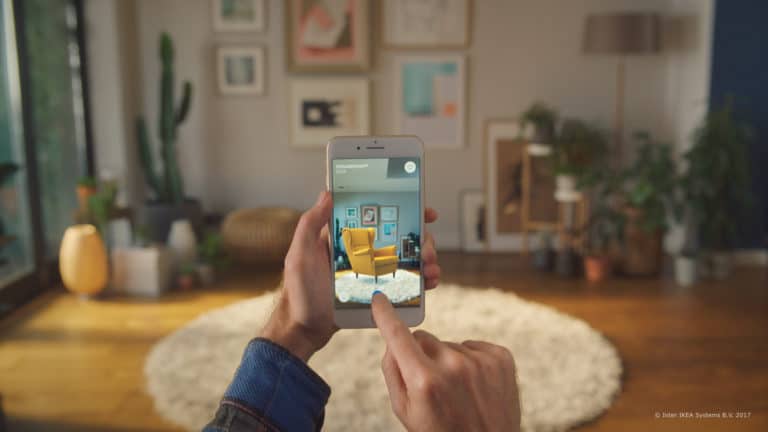
The world has reined back its excitement over augmented reality (AR)… or at least its realistic timing to consumer ubiquity. It will be revolutionary, but the fully realized vision (smart glasses) is more of a 2022 thing than a 2018 one. This has to do with size, cost and most of all, style.
But there are a few caveats to that sobering claim. First, AR glasses are already working in the enterprise. In manufacturing there’s clearer ROI, such as boosted output through AR-guided assembly and maintenance. And the stylistic resistance to look like a cyborg goes away at work.
The second caveat is mobile. During the years it takes for AR glasses to come down in size, price and stylistic acceptance, AR will find a more receptive home in the smartphone. Not only do you already carry one, but it has all the ingredients for AR, such as optics, viewfinder and GPU.
Fueled further by mainstream interest and validation from things like Pokemon Go (not “true AR”), tech giants have begun to blitz mobile AR. That includes lots of activity over the past six months — starting with Facebook’s Camera Effects platform, and more recently Apple’s ARKit.
The latter will have the most impact on mobile AR, partly due to more dimensionally accurate AR graphics. But more importantly, it works with 380 million existing iPhones according to ARtillry calculations. And it will be even more capable with rumored depth-sensing optics in the iPhone 8.
In fact, ARkit’s biggest accomplishment will be to mainstream AR. Its true genius is democratizing advanced AR with a toolkit that automates the hard parts. Think of it like Unity for AR. This will ignite developer creativity that rivals that of the app economy itself, ten years ago.
And we’re already seeing that happen through legions of demos that showcase the breadth of capability. They span the gamut of practical to whimsical. For example, one of the most creative and fun examples so far is the AR-rendered homage to A-ha’s 80’s hit, Take on Me.
But what about local commerce? What kinds of apps and use cases have we seen? How will those inspire other local apps that evolve and ideate rapidly? To get a glimpse of the activity so far and envision where it might go next, here are a few examples.
Visualize menu items.
Find items in a grocery store.
Configure your Tesla, place it in your driveway.
See if the new couch fits.
Navigate to the closest coffee shop.
House hunting.
Check out the newest Mercedes.
Measure your kitchen dimensions.
More will develop quickly. But it’s important to note that these are mostly front-end design concepts. Real execution will require an extensive value chain. For example, location data will be a key element in displaying the right business or product information graphically.
Some of that will involve object recognition, a la Google Lens to “register” real world items and overlay graphics accordingly. But it will also need a fair amount of geo, product and business data. We’re talking Yelp reviews, real time product availability, hours of operation, etc..
That means companies like Yext and Foursquare that collect and optimize local data will have a valued place the AR ecosystem. It will be redemption for the years that sector has echoed the (correct) message that content is king, but data is God. It’s the “new oil” says the Economist.
The AR world isn’t spending lots of time talking about this yet. But after the honeymoon period of flashy ARkit demos recedes, a practical reality will wash over the sector. It could be analogous to the sparkly but malfunctioning introduction of Apple Maps. Let’s hope it’s not that bad.
A version of this post originally appeared in Street Fight by ARtillry Chief Analyst Mike Boland. It is adapted and reposted here for ARtillry readers.
For a deeper dive on AR & VR insights, see ARtillry’s new intelligence subscription, and sign up for the free ARtillry Weekly newsletter.
Disclosure: ARtillry has no financial stake in the companies mentioned in this post, nor received payment for its production. Disclosure and ethics policy can be seen here.
Header image credit: IKEA
